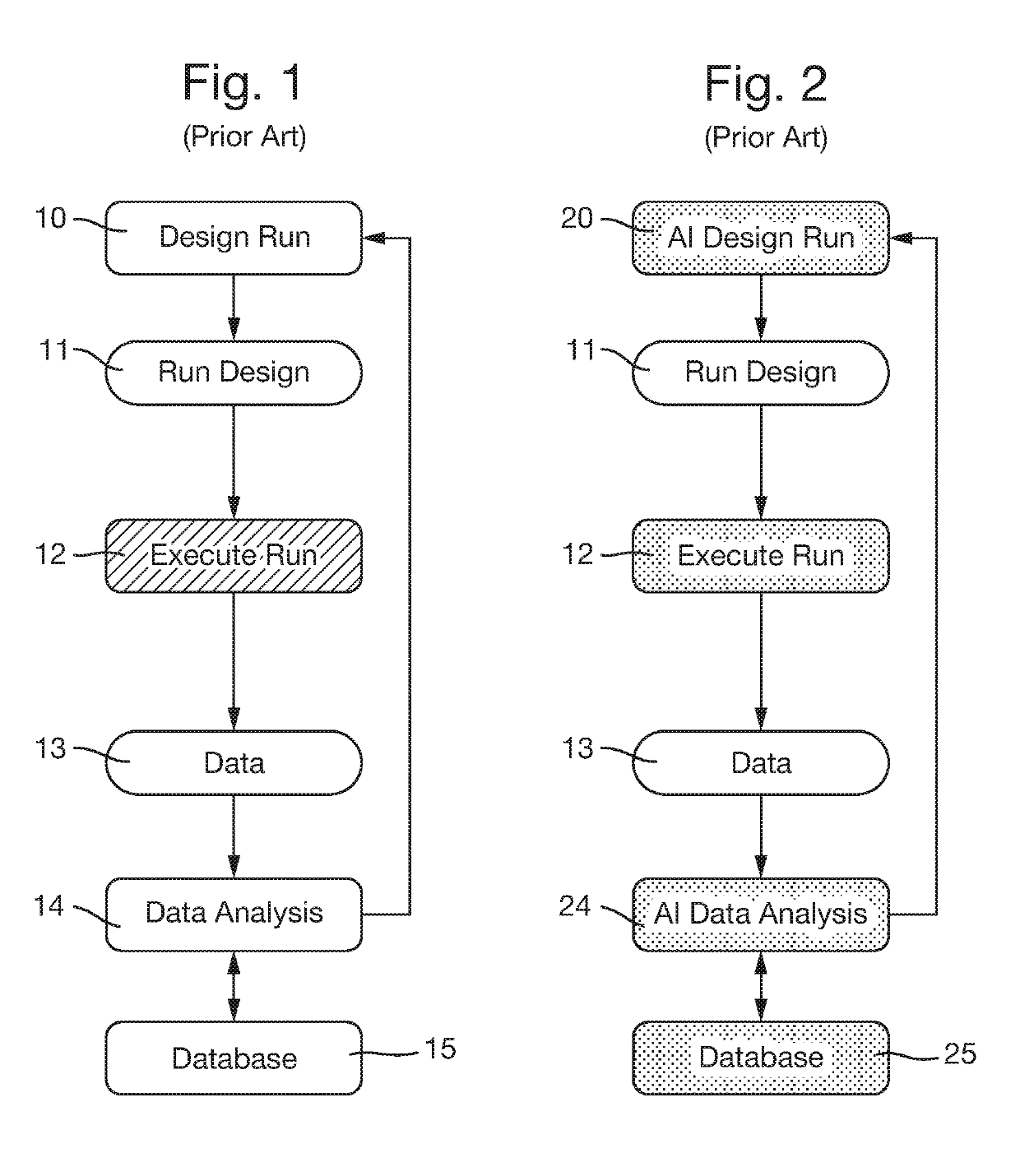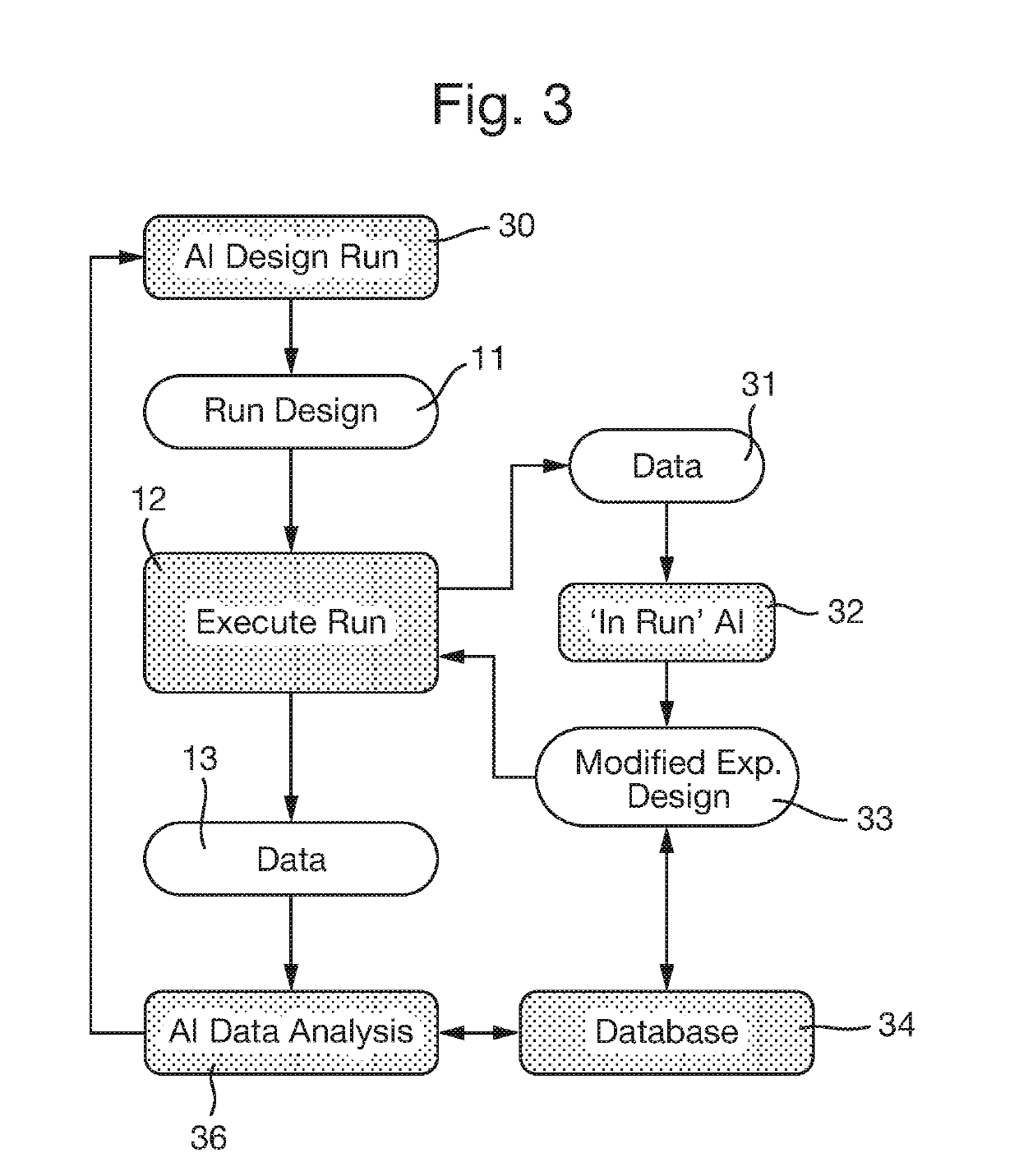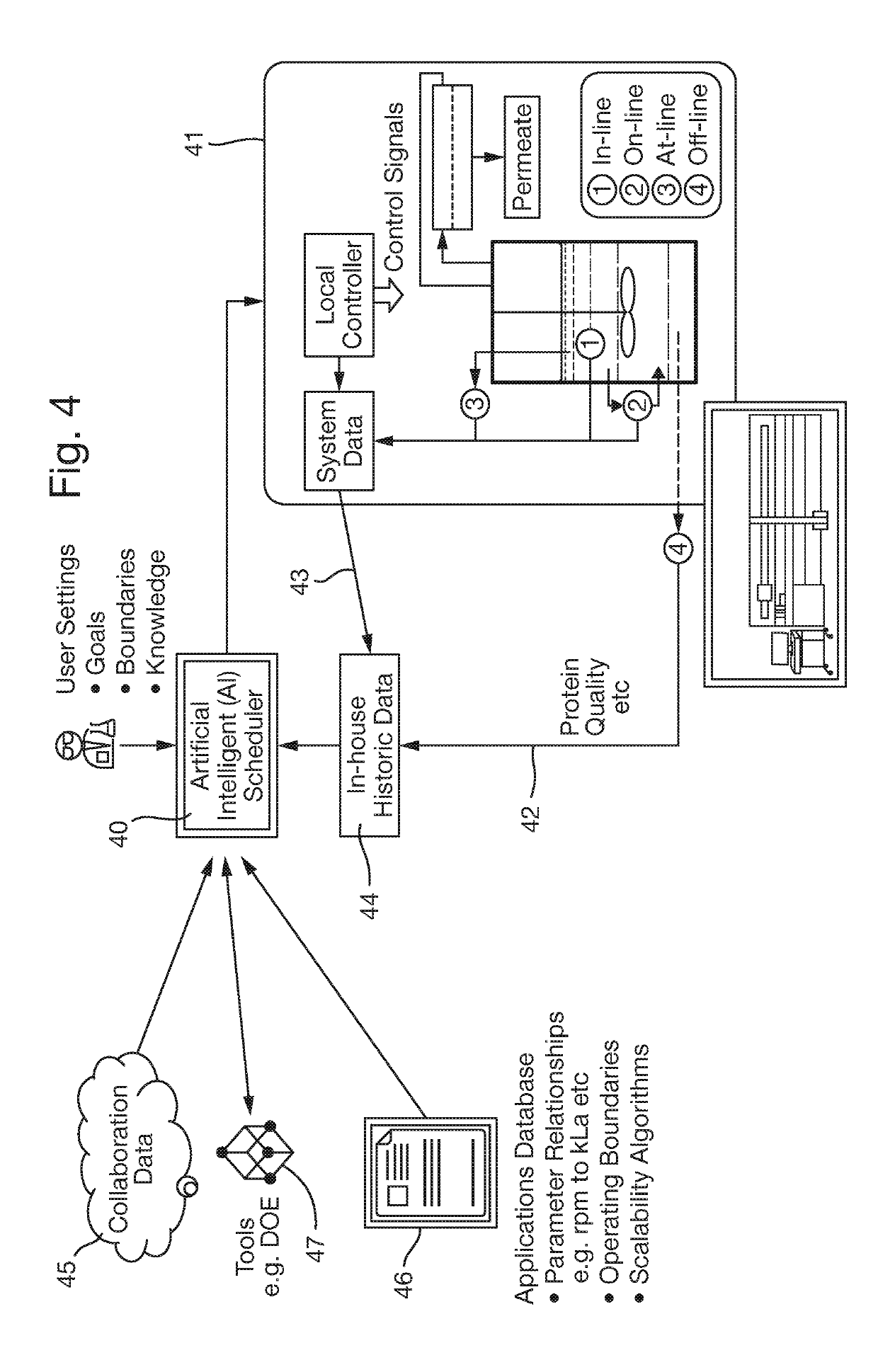The key material to be assessed in these experiments is valuable and limited in supply.
Indeed some materials can be particularly sensitive and very small changes in the material, for example a
single amino acid in a
protein can have a significant and unpredicted effect on the behaviour of the protein.
The current trends in development strategy add to the scale of the challenges in
bioprocess development relating to the amount of material available for testing at early stages.
At early stages of, or prior to
process development, a critical point at which candidate molecule selection is carried out, typically all unit operations are inefficient and sub-optimal.
The cost of such scale runs is high, added to this the cost of subsequent work to separate the product from the
cell culture and purify the protein (UF / DF is typically the final or penultimate step) is high, which makes significant demand on human and facility resources and of long duration.
Where multiple different trial UF / DF runs are required to assess the performance of the candidate in the UF / DF process the scale of the challenge becomes so large that historically such experimentation has been often not carried out and resulted in significant commercial problems where issues arise in
late stage manufacturing development.
An additional complication is that small-scale assessments, for example processes carried out in microtitre plates at μl volumes do not impose the same
physical stress on the
protein materials and as such do not fully indicate the relative performance of molecules in manufacturing type processes.
As such there is a conflict between the cost / effort / duration of obtaining
test material and the need for representative manufacturing like processes.
This is further complicated by the fact that multiple candidate molecules require assessment for the selection of the most appropriate ones for the manufacturing platform processes.
Additionally the behaviour of therapeutic proteins may be unpredictable.
One problem is that the ranges selected for the operating parameter values may be unpredictably inappropriate for the
test protein in question and it may become apparent during the experiment that the protein is, for example, unstable in a certain range of values for a particular parameter.
As such all the material used in the proportion of the experiments using the aforesaid range is effectively wasted.
Experimental procedures or individual runs can often take a long time to execute as well.
In these scenarios it can be impossible to predict how the material will perform.
This results in a
delay in achieving meaningful results and a large amount of valuable material being wasted before a new experiment can be designed.
Such design does not offer reduction in the volume of material required though it may theoretically reduce the number experimental steps to some degree.
Such approaches still required significant volumes of material and place a demand on manual labour.
Development of processes and strategies for the manufacturing of biological molecules is complex.
Firstly there are
multiple factors in the creation of such recombinant bacterial strains that add complexity.
At higher temperatures such as 37° C., typical growth conditions for E. coli, the
organism may produce high yields of protein but due to the fact that recombinant protein sequences are generally derived from different organisms such proteins are not able to correctly form their 3 dimensional structure during the process of translation in the alien host production
organism.
The complexity of such systems is further illustrated by for example the fact that the
nutrition supplied may limit the availability of certain amino acids essential for the target recombinant protein; this in turn may
impact on the rates of production of the
target protein, thus there being interactions between
nutrition and temperature.
Searching combinations of
DNA construct, host production strain and growth conditions occupies significant amount of time in bioprocessing and though some prediction can be made practical experimentation remains the mainstay of the industry due to the complexity.
A further level of complexity found in bioprocessing to a level exceeding that in
chemical synthesis arises from the
impact of the accumulated history of the production strain.
Such changes also potentially affect the
DNA construct itself.
In
mammalian cell cultures a further challenge arises from the fact that with most current established technologies the
insertion of the
DNA construct carrying the
gene for the recombinant protein may be into the host
cell genome may occur randomly.
In summary, known bioprocessing development systems require that a
full cycle of experimentation be carried out before any refinement for the next set of test conditions are tested, there is an extended duration of development as the experiments iterate towards a conclusion and a very valuable input materials are used inefficiently much of it being wasted.
 Login to View More
Login to View More 


